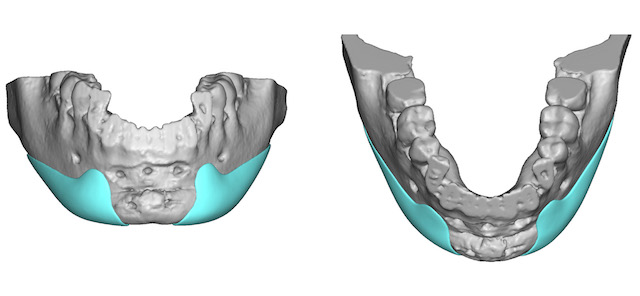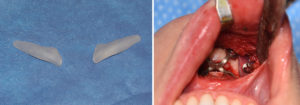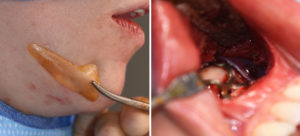Background: A sliding genioplasty is the autologous option for chin augmentation. It is a versatile chin reshaping procedure that can provide horizontal projection, vertical length and even width reduction. The only dimension it can not achieve is chin widening. (which is the antithesis of what an implant can’t do…chin narrowing) Speaking of chin width it is also important to remember that most sliding genioplasties will make the chin more narrow as it comes forward which is an often overlooked dimensional effect of this procedure.
While an autologous chin augmentation procedure avoids the potential complications of an implant, that does not mean it is complication free. It merely means it has its own unique set of potential complications.While mental nerve injury and non-union are the most serious complications of chin osteotomies they are fortunately very infrequent. By far the most common issues are adverse aesthetic effects such as overcorrection in either the horizontal or vertical dimensions and persistent tightness and discomfort from the soft tissue stretch and/or vestibular incision locations.
Aesthetic overcorrection of the chin by osteotomy and chronic chin tightness and discomfort are treated by the same procedure…subtotal or total sliding genioplasty reversal. Whether it is early before complete bony healing or late when it is fully healed, a secondary osteotomy can be as successfully done as the initial one. Particularly in advancements the residual bony step off is easily seen and the line of bony cut repeated. Any degree of horizontal or vertical reduction can then be done. In my experiences most patients opt for a subtotal reversal as there was a reason the initial procedure was done.
One of the more frequent aesthetic concerns of the sliding genioplasty, even if the dimensional needs were met, is the irregularity created along the inferior border at the back end of the bone cut. This becomes more pronounced the larger the advancement is and/or if the bone cut was highly angled. While it is almost always palpable, in some cases it may be visible. This can also be a contributor to the chin narrowing effect as visible indentations help create a potentially pinched look. Some of the these indentations will decrease or go away depending upon how much of the chin advancement is reversed. If not, it will require an implant overlay to obliterate them or create an overall chin widening effect.
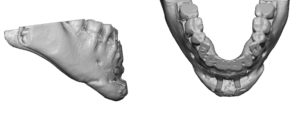


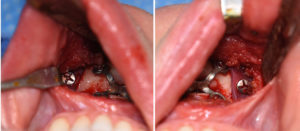
While a subtotal sliding genioplasty reversal can decrease excessive horizontal projection and vertical length, it alone can not improve the width of the chin. Implant coverage is needed and a custom implant design provides the greatest control over how much and where the width increases are accomplished.
Case Highlights:
1) A sliding genioplasty can result in symptoms such as over correction and other symptoms that may require subtotal or complete reversal.
2) A subtotal sliding genioplasty uses the same osteotomy line as the original procedure which is usually easily identified.
3) Whether a sliding genioplasty is done for primary advancement or setback increasing the width of the chin requires implant placement along the sides.
Dr. Barry Eppley
Indianapolis, Indiana

